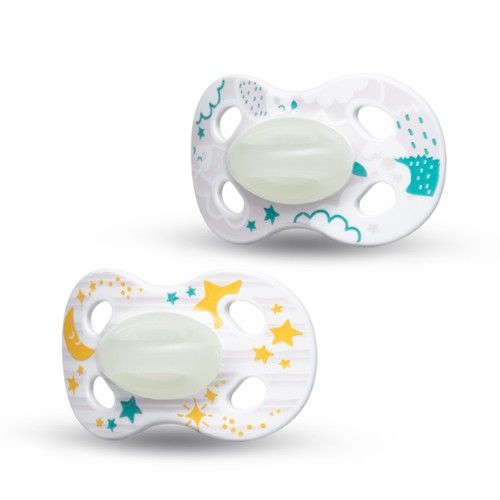What makes this product so different?
At Medela Baby we know soothers can comfort your little one at bedtime. Our NIGHT soother, which is orthodontic and loved by nine out of ten babies,1 is especially designed to be the perfect sleep companion. With its good sized vent holes and ergonomic shield, your baby can breathe with ease. The Night pacifier has also a glow-in-the-dark knob that allows you and your little one to find it in the dark. Without a ring, your baby’s sleep is not disturbed when moving at night.
So nothing comes between you two – but love.















.jpg/jcr:content/Night%20&%20Night%20Range%20Overview%20(1).jpg)
.jpg)
.jpg)
.jpg)
.jpg)
.jpg)
.jpg)




